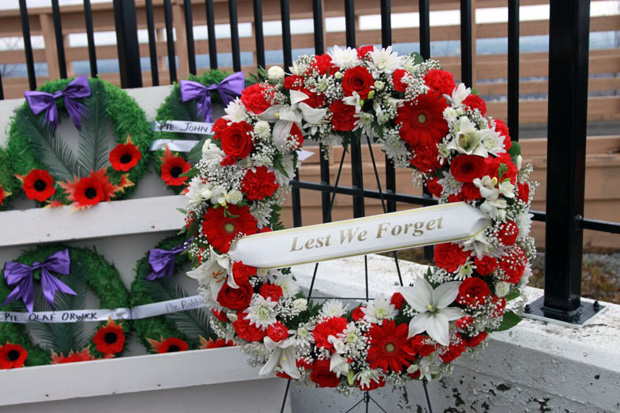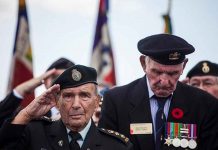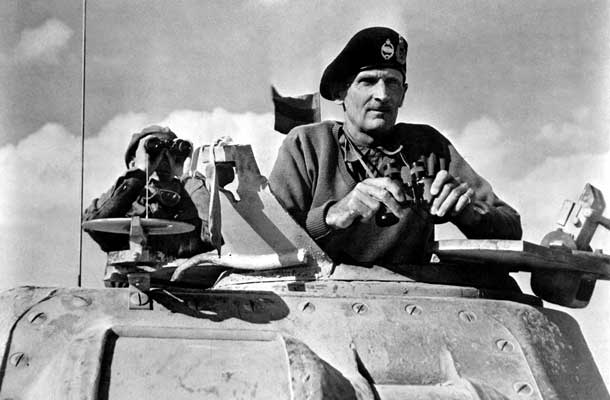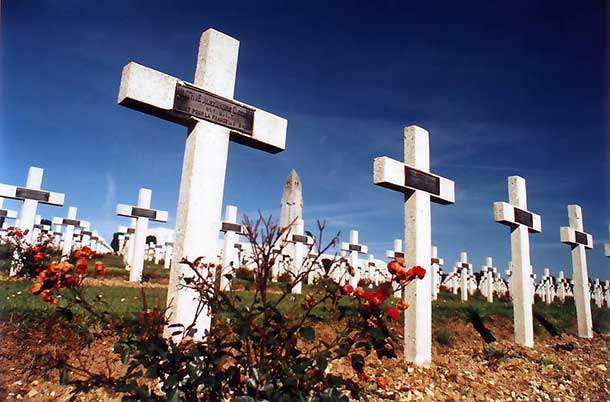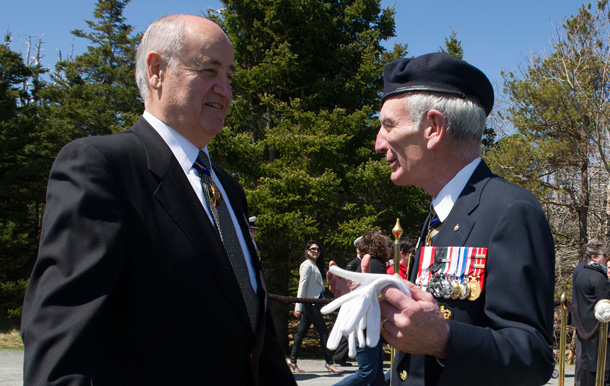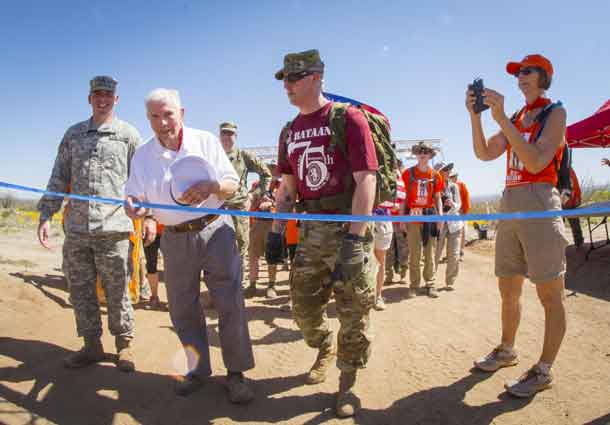

WHITE SANDS MISSILE RANGE, N.M. UNITED STATES — The 75th anniversary of World War II’s infamous Bataan Death March was observed by 7,200 people who gathered here in the early-morning hours to participate in an 8.5-mile walk, March 19, 2017.
Once again, Ben Skardon, a retired Army colonel, was the oldest participant and the only living survivor of the Bataan Death March to walk in the event.
Skardon, 99, walked through the unforgiving New Mexico desert as temperatures reached 90 degrees Fahrenheit, refusing to quit until he’d finished the same distance he’d covered in his previous nine marches.
Skardon is a beloved alumnus and professor emeritus of Clemson University in South Carolina, so Clemson orange was the color of choice for the 64 members of “Ben’s Brigade” — his die-hard support group made up of friends, family, former students and relatives of his fellow prisoners of war.
The swarm of orange T-shirts was only given competition as Skardon crossed through several bright yellow fields of blooming California poppies between the four- and six-mile markers.
History of the March
The Bataan Memorial Death March event honors a special group of World War II heroes responsible for the defense of the islands of Luzon, Corregidor and the harbor defense forts of the Philippines. On April 9, 1942, tens of thousands of American and Filipino troops were forced to surrender to Japanese forces. The U.S. service members were soldiers, sailors, airmen from the Army Air Corps, and Marines. Among the surrendering troops were large numbers of the New Mexico National Guard’s 200th Coast Artillery — the reason the memorial march is held in New Mexico.
Often overlooked are the four months of fierce fighting that took place before the American and Filipino forces surrendered. Skardon earned two Silver Stars and four Bronze Stars during that short time span.
After their surrender, the troops were force-marched 65 miles to confinement camps throughout the Philippines. They were deprived of food, water and medical care. About 10,000 men died on the march, while thousands of others died in the camps. Those who survived weren’t freed until 1945.
This was Skardon’s 10th, and he insists, not his last time walking in the march here, which marks its 28th year.
Skardon said he considers a personal pilgrimage to participate in the walk. He also said it’s his obligation to attend every year, and walk with the thousands of others who come to honor his brothers-in-arms who didn’t survive the Bataan Death March or the years of confinement that followed.


